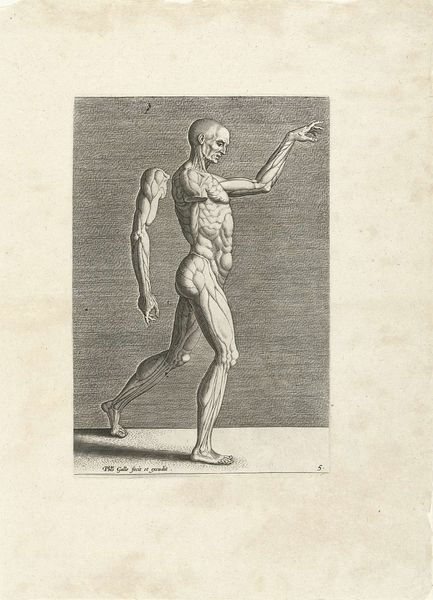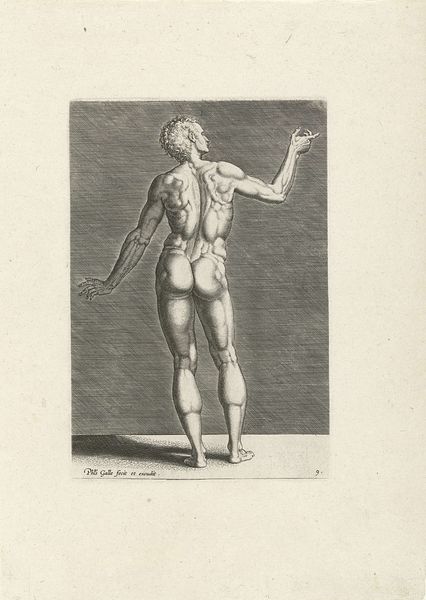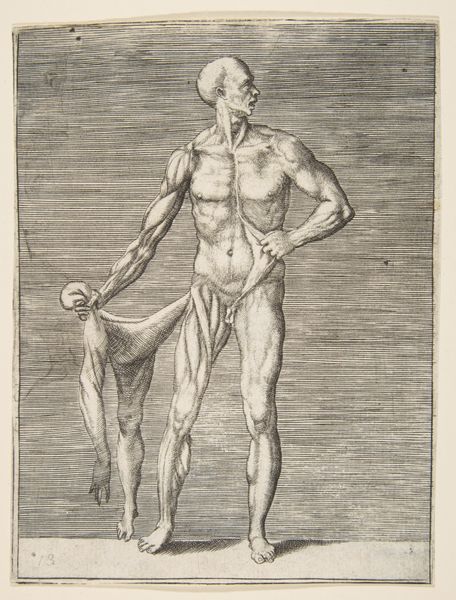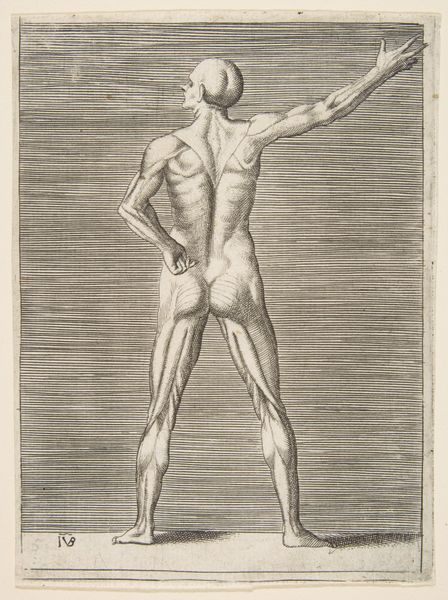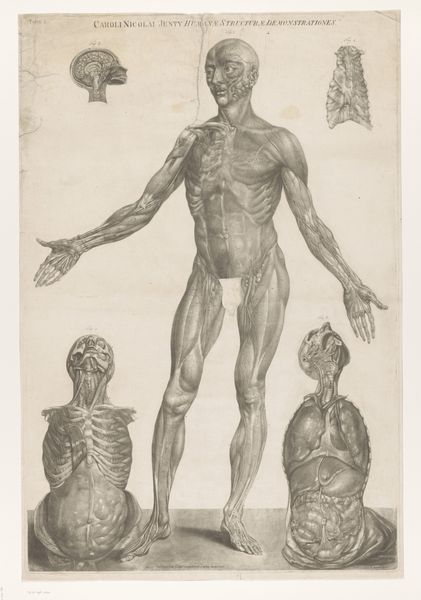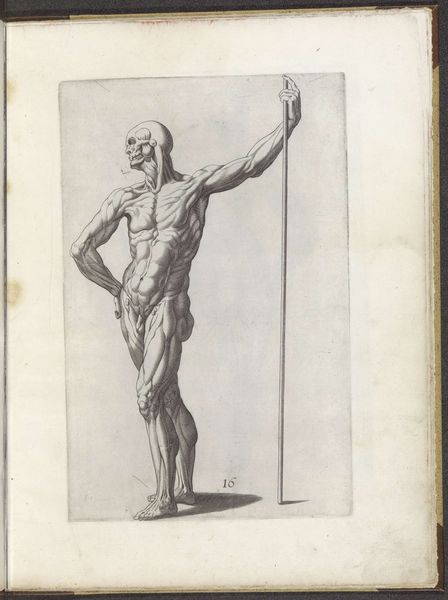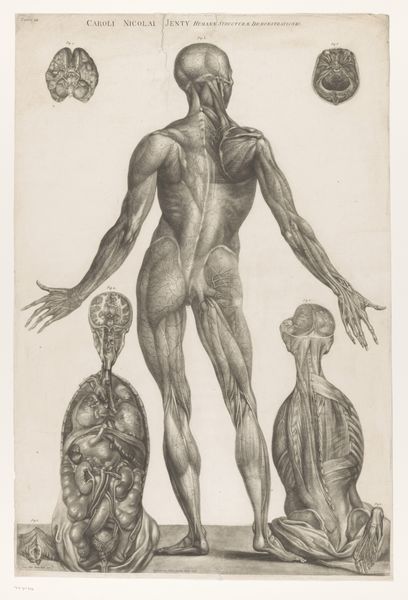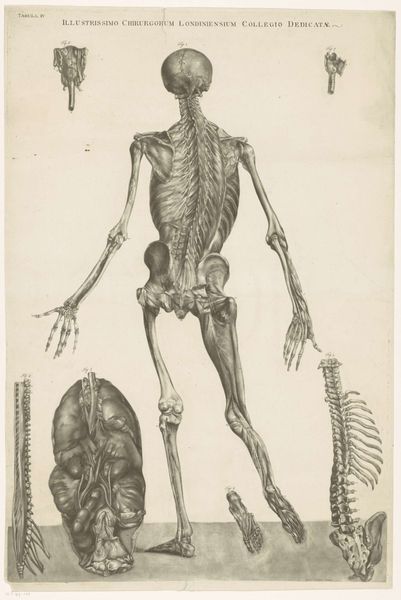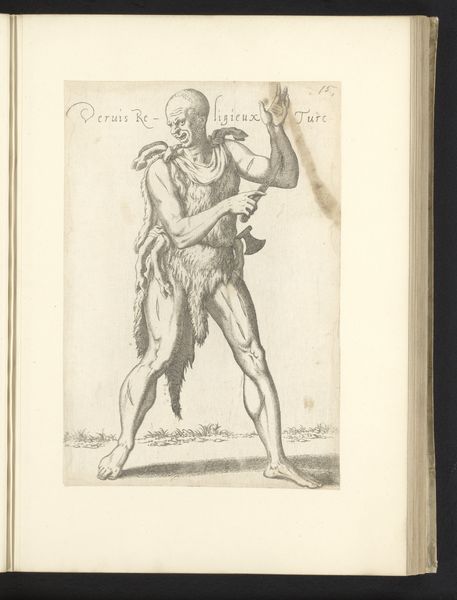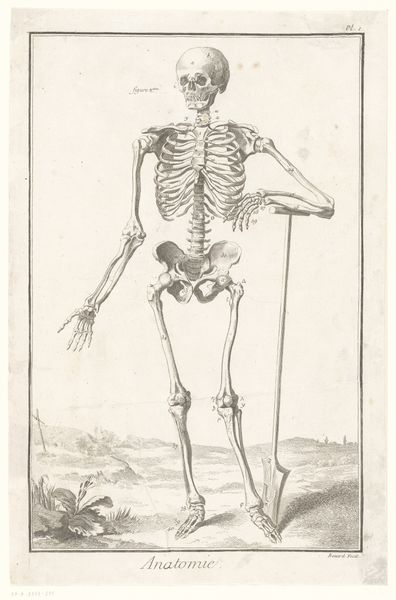
Dimensions: height 235 mm, width 160 mm
Copyright: Rijks Museum: Open Domain
Philips Galle produced this print of a flayed human figure, or écorché, in the Netherlands sometime between the mid-sixteenth and early seventeenth centuries. The image reflects the growing importance of science and anatomical study in the period, and the increasing cultural authority of empirical knowledge. At this time, the dissection of human cadavers was becoming more common in medical schools and artists' workshops. In doing so, artists sought a deeper understanding of human anatomy. In this print, the subject stands on a small plinth, as if posing for the viewer, the absence of skin and fat revealing the complex network of muscles beneath. Prints like this one circulated widely. They served as guides for artists, medical students, and scholars. Today, historians use a wide range of resources, including surviving prints, drawings, and written texts, to understand the complex social and intellectual history of anatomical study in the early modern period. These allow us to reflect on how the body has been understood in different times and places.
Comments
No comments
Be the first to comment and join the conversation on the ultimate creative platform.
